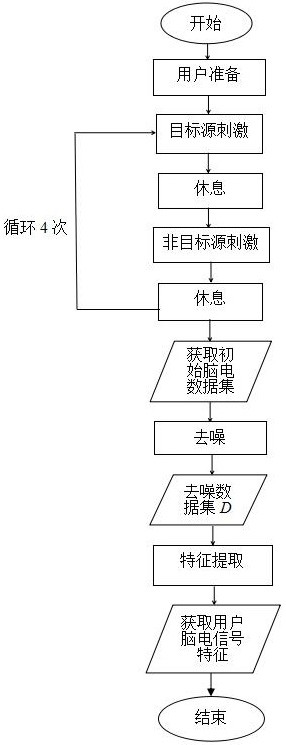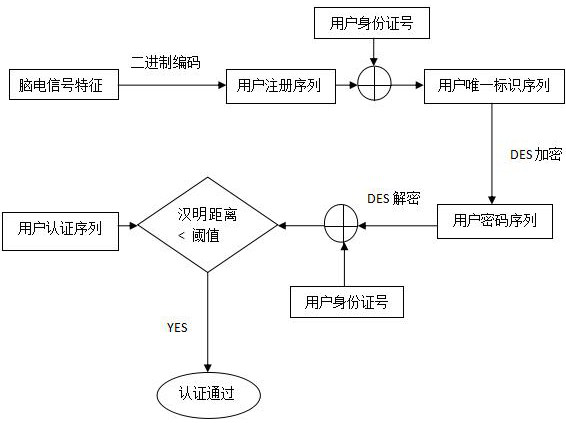Identity recognition method based on taste-induced electroencephalogram signals in remote medical system
An EEG signal and telemedicine technology, which is applied in the interdisciplinary field of machine learning and information security, can solve the problems of potential safety hazards, easy forgetting and forgery of authentication credentials, etc., and achieve the effects of improving use efficiency, being unique and not easy to be imitated, and reliable authentication
- Summary
- Abstract
- Description
- Claims
- Application Information
AI Technical Summary
Problems solved by technology
Method used
Image
Examples
Embodiment Construction
[0035] The technical solution of the present invention will be further described in detail below in conjunction with the accompanying drawings.
[0036] The present invention is mainly aimed at an identity recognition method based on taste-induced EEG signals for a telemedicine system. The telemedicine system consists of three nodes: a sensor node, which is mainly a head-mounted EEG signal collector, and other Some medical sensors on the body; the aggregation node, that is, the USB Dongle, can use it to receive the raw EEG data transmitted through wireless Bluetooth, and plug it into a PC or embedded device to transmit the collected raw EEG data to the remote Control node; remote control node, composed of medical institutions. The present invention mainly includes two stages: user identity registration stage and user identity authentication stage. The specific implementation steps of the two phases include:
[0037] Select a suitable EEG acquisition device. In this embodimen...
PUM
 Login to View More
Login to View More Abstract
Description
Claims
Application Information
 Login to View More
Login to View More - R&D
- Intellectual Property
- Life Sciences
- Materials
- Tech Scout
- Unparalleled Data Quality
- Higher Quality Content
- 60% Fewer Hallucinations
Browse by: Latest US Patents, China's latest patents, Technical Efficacy Thesaurus, Application Domain, Technology Topic, Popular Technical Reports.
© 2025 PatSnap. All rights reserved.Legal|Privacy policy|Modern Slavery Act Transparency Statement|Sitemap|About US| Contact US: help@patsnap.com



